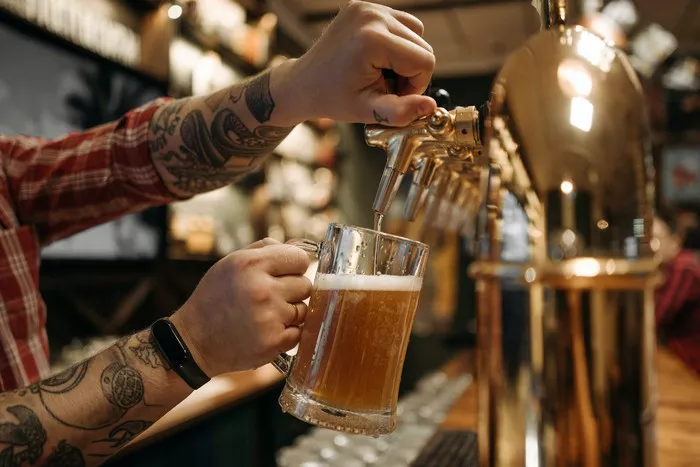Non-alcoholic beer has gained popularity among health-conscious individuals, designated drivers, and those seeking an alternative to traditional alcoholic beverages. However, there’s a common misconception that non-alcoholic beer doesn’t expire due to its lack of alcohol content. In reality, like its alcoholic counterparts, non-alcoholic beer does indeed have a shelf life and can expire under certain conditions.
Understanding the Shelf Life of Non-Alcoholic Beer
The belief that non-alcoholic beer doesn’t expire stems from its lower alcohol content compared to regular beer. While the absence of high alcohol levels does contribute to a longer shelf life, non-alcoholic beer isn’t immune to deterioration. Most non-alcoholic beers have a shelf life that ranges from 6 to 12 months from the production date.
Factors such as storage conditions, packaging, and exposure to light can significantly impact the expiration date of non-alcoholic beer. The absence or minimal amount of alcohol in these beers doesn’t eliminate the risk of spoilage; rather, it alters the timeline of its shelf life compared to regular beers.
Packaging and Storage Conditions: Vital Determinants of Non-Alcoholic Beer Longevity
The packaging material and storage conditions play a pivotal role in determining the shelf life of non-alcoholic beer. Unlike traditional beers that can be negatively impacted by oxidation due to their higher alcohol content, non-alcoholic beers are more susceptible to the effects of light and temperature variations.
Most non-alcoholic beers are packaged in dark-colored bottles or cans to shield the liquid from light exposure, which can lead to the degradation of flavors and the development of off-putting aromas. Storing non-alcoholic beer away from direct sunlight and in a cool, dark place can significantly extend its shelf life.
Temperature fluctuations can also accelerate the expiration process of non-alcoholic beer. Exposure to high temperatures can cause the beer to spoil more rapidly, leading to changes in taste and aroma. Therefore, storing non-alcoholic beer in a consistently cool environment, ideally at temperatures between 45°F and 55°F (7°C and 13°C), is recommended to maintain its quality and freshness for an extended period.
Understanding Signs of Non-Alcoholic Beer Spoilage
Recognizing the signs of spoilage in non-alcoholic beer is crucial in determining whether it has expired or not. While non-alcoholic beer may not pose health risks similar to spoiled food, consuming a past-its-prime non-alcoholic beer can result in a less enjoyable drinking experience.
One of the primary indicators of non-alcoholic beer spoilage is a change in taste and aroma. Fresh non-alcoholic beer typically exhibits a crisp and refreshing flavor profile akin to its alcoholic counterparts. However, as it approaches or surpasses its expiration date, the taste may become stale, flat, or develop an unpleasant aftertaste.
Similarly, changes in the beer’s aroma can signify spoilage. Fresh non-alcoholic beer often has a pleasant aroma characterized by hops and malt. When it expires, the aroma may become musty, skunky, or reminiscent of wet cardboard, indicating that the beer has gone bad.
Another visible sign of non-alcoholic beer expiration is the presence of sediment or particles floating in the liquid. While some sediment may be natural in certain beers, an excessive amount or the sudden appearance of sediment could suggest that the beer has deteriorated and is no longer suitable for consumption.
Extending the Shelf Life of Non-Alcoholic Beer
To maximize the shelf life of non-alcoholic beer and preserve its quality, several practices can be adopted. Firstly, ensuring proper storage in a cool, dark place away from sunlight and temperature fluctuations is paramount. Additionally, adhering to the manufacturer’s recommended expiration date and consuming the beer within that timeframe is advisable to enjoy it at its best.
Refrigeration can significantly slow down the degradation process of non-alcoholic beer. Storing it in the refrigerator rather than at room temperature can help maintain its freshness and flavor for a more extended period. However, once opened, non-alcoholic beer should ideally be consumed within a few days to prevent it from going flat and losing its taste.
Sealing the beer container tightly after each use can also contribute to preserving its quality. Exposure to oxygen can accelerate the oxidation process, leading to flavor changes and a shorter shelf life. Using airtight caps or resealable containers can help minimize oxygen exposure and prolong the beer’s freshness.
The Importance of Checking Expiration Dates
While non-alcoholic beer may seem more durable due to its lower alcohol content, it’s essential to check the expiration date before consuming it. Manufacturers provide an expiration date for a reason – to ensure consumers enjoy the product at its peak quality. Consuming non-alcoholic beer past its expiration date can result in an unpleasant taste experience, diminishing the enjoyment derived from the beverage.
Retailers also play a crucial role in maintaining the quality of non-alcoholic beer by adhering to proper storage conditions. Purchasing non-alcoholic beer from reputable stores that prioritize proper storage and rotation of stock can enhance the likelihood of obtaining fresher products with a longer shelf life.
Conclusion
In conclusion, the notion that non-alcoholic beer doesn’t expire is a misconception. While its lower alcohol content does contribute to a longer shelf life compared to regular beer, non-alcoholic beer can indeed expire under unfavorable conditions. Factors such as packaging, storage conditions, exposure to light, and temperature fluctuations significantly impact its longevity.
Understanding the signs of spoilage, adhering to proper storage practices, and checking expiration dates are crucial in ensuring the consumption of fresh and enjoyable non-alcoholic beer. By taking these measures, enthusiasts can savor the flavors and benefits of non-alcoholic beer while appreciating its extended shelf life when handled and stored appropriately.


